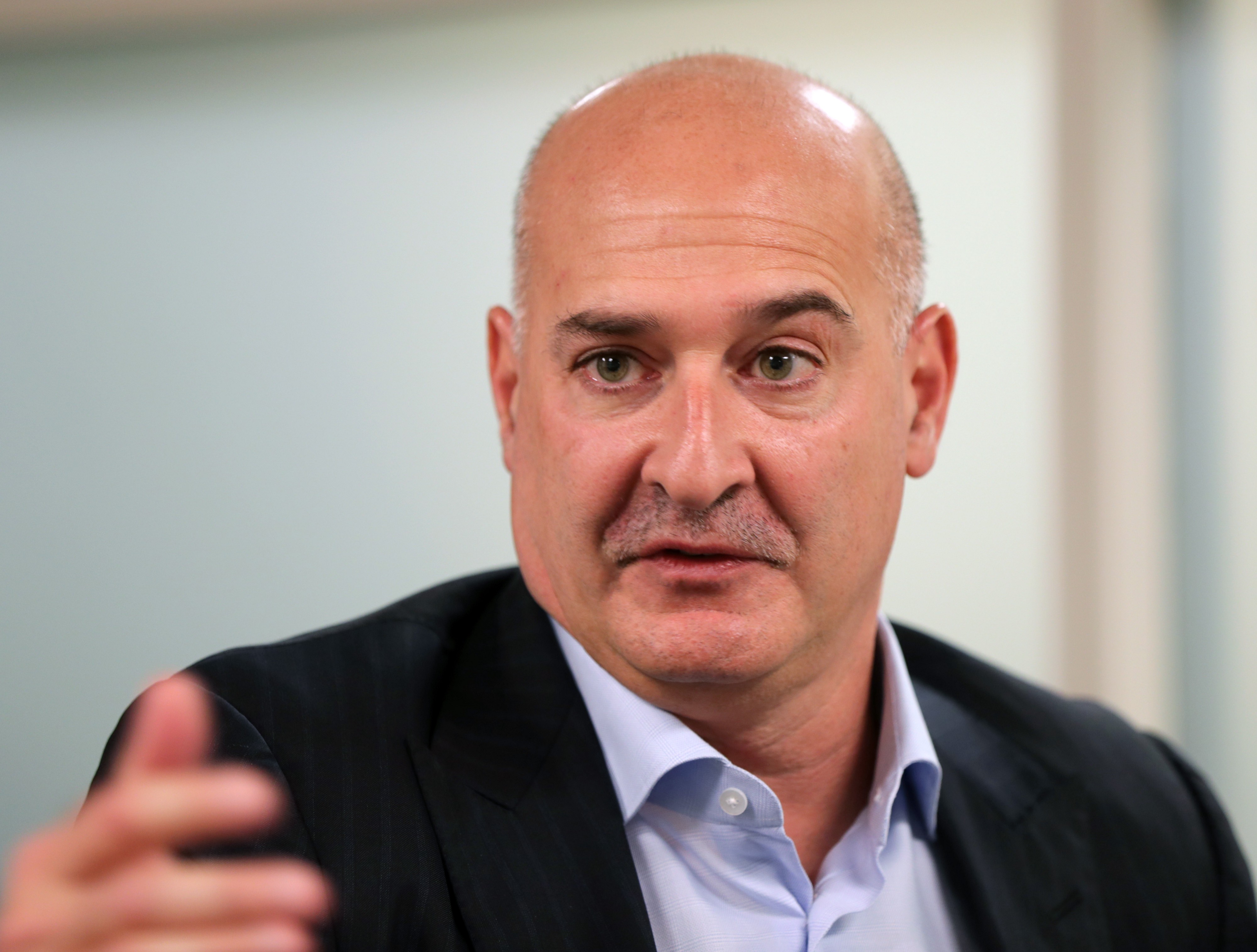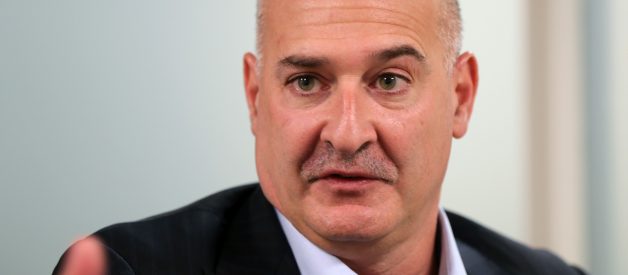Salesforce shouldn?t have had two CEOs, but there are moments in a company?s life when it makes sense to have dual leaders
 Former Salesforce co-CEO Keith Block. Photo: Joanne Rathe/The Boston Globe/Getty Images
Former Salesforce co-CEO Keith Block. Photo: Joanne Rathe/The Boston Globe/Getty Images
To paraphrase an old saying: When you have two CEOs, you have no CEO.
I think we just saw that adage play out last month at Salesforce, when Keith Block, who was elevated to co-CEO just 18 months ago, suddenly stepped down, leaving founder Marc Benioff as the sole Salesforce CEO once again.
Block will remain on as an adviser for Salesforce, and his resignation was announced in the midst of celebrating a strong quarter. But regardless of the positive spin, it appears that having two leaders just didn?t work out for Salesforce.
News like this tends to highlight the drawbacks of a co-CEO structure: Two leaders means a series of split decisions and bickering. Two leaders means mixed messages and incongruent priorities. Two leaders means everyone has two bosses.
But it doesn?t have to be that way. A company having two CEOs can work. In fact, there is a time in a company?s life cycle when it works extremely well; in the growth stage of a startup, having two leaders is almost necessary. It?s a period rife with some undeniable problems that always bubble up at the top level of startup leadership.
There?s just too much for one person to do
Raise your hand if you?re a CEO with too much free time.
I?ve been in the startup world for over 20 years, and the amount of work I?ve seen loaded onto a CEO?s shoulders (including my own) has increased steadily throughout that time. I understand the pressure that a CEO feels to work themselves to the bone and give the so-called 110%. But the math on giving 110% usually breaks down to giving 10% across 11 different priorities.
Once a company stabilizes and becomes something that no longer resembles a startup, the CEO job takes on a new meaning.
At the beginning of a startup?s life, when the team is small and everyone is wearing multiple hats, it absolutely makes sense to have one leader who drives all the strategy and makes all the decisions. But as a startup grows, I?ve seen CEOs wobble, and even crumble, under the strain and either do irreparable damage to the company or get themselves replaced.
I?ve also seen instances where a CEO is expected to handle every public-facing aspect of the company but never gets to delegate the rest of the CEO duties ? namely, decisions, strategy, internal leadership, growth, positioning, and creativity. When time inevitably gets tight, they stop doing all the stuff that made them a great CEO in the first place.
The CEO becomes a single point of failure
Another issue I see time and again as a startup grows is that too much power and responsibility gets tied up in one person. If the CEO ever quits (been there), gets replaced (been there), or just suddenly goes up their own butt (yeah, been there), the entire company is left in a vacuum they might not emerge from any time soon.
Even with something as simple as the CEO taking a vacation, one of two things will usually happen: Either the CEO works through the vacation ? poorly ? and doesn?t get a much needed break, or another executive is left in charge even though that person doesn?t have any real authority.
Succession is always rocky
When a good CEO leaves or gets replaced, the standard protocol is to bring in an outsider with CEO experience, and usually, this is a disaster that plays out slowly and painfully. This often happens when the original founder of a startup is ousted for someone with more experience at the growth stage.
But even if the founding CEO survives the growth stage, and even if the company does have the sense to create a succession plan ahead of time, there?s usually a battle at the executive level for that job. The result of all that jockeying is an entire executive management team trying to show that they think, talk, and act like the current CEO. This is debilitating. Also, after the selection of the successor, a lot of the executive team will quit anyway.
You probably have your own personal experience with one or more of these scenarios. But one way to prevent these outcomes is by installing a second CEO. Here?s how that process should go to avoid being left with an ineffectual or disgruntled second CEO.
What you really need is a CEO2
Your startup doesn?t need a co-CEO, or CEO Jr., or a CEO successor. It needs a CEO2, which is more like a substitute CEO or ? if it helps make it easier to picture ? a CEO body double who thinks for themselves.
I?m not talking about the CTO or the COO or the CFO lying in wait for the top job. For the good of the company, the CTO has to be in complete charge of the technology, the COO has to focus 100% on the operations, and the CFO needs to know where every penny is.
In order to create a CEO2, you need to split the executive duties. And the simplest way to do that isn?t by team ? it?s by function.
Managing up, managing down, managing out, managing in
So how do you split the duties of a CEO? It goes back to the original role of the CEO: leading the company both internally and externally.
Until the company starts to scale, the CEO?s responsibilities include managing up (focusing on the board, the investors) and managing down (focusing on the employees). As a startup grows, it gets harder for the CEO to manage down. Not only in terms of the logistics of running a company with 50 or more employees, but also in adopting the style changes necessary to manage down at later stages. On top of that, the demands of managing up are also growing, and when the CEO has to choose which direction to manage, they?re kinda required to choose the board and investors.
Managing down and managing in is where the CEO2 could fortify the CEO position.
Furthermore, as growth accelerates, the CEO needs to manage out (focus on sales and marketing) as well as manage in (focus on the product or service).
But sustained growth eventually makes it difficult for the CEO to manage in. This is almost always strictly due to the demands to drive revenue. The constant focus on sales, market penetration, and partnerships leave no time to consider the creative choices that should be made to evolve the product or service.
Managing down and managing in is where the CEO2 could fortify the CEO position. That?s not to say there should be an even split, but a CEO2 should advocate for the employees, the product or service, and the customers when the CEO is out landing funding, bigger customers, and windfall partnerships.
A CEO2 must be a body double
Keep in mind that a CEO2 has to have the authority to make the same kinds of decisions the CEO makes, especially in the absence of the CEO. This isn?t a junior executive position ? the CEO2 is someone who could be the CEO at another company.
It also has to be someone who has the same vision as the CEO, and the two of them need to be tightly aligned. While the CEO2 may bring a different perspective to the problems and the strategy, they should defer to the CEO on all decisions. And while the CEO has final authority, they have to be willing to let go of whatever they delegate and live with the decisions made by the CEO2.
A startup would be wise not to let those bubbling problems at the top of the org chart trickle down to the rest of the company.
Finally, both the CEO and CEO2 have to be able to check their egos. It takes a ton of trust. But a different viewpoint on the same problem from someone with the same priorities can be a total lifesaver. It gives the CEO the ability to keep an overview at a high level and maintain leadership over all aspects of the company without feeling like they have to know everything about everything and be everywhere at once.
When to end the CEO2 relationship
So why did Salesforce ditch their second CEO and go back to a single CEO structure? If it truly wasn?t a matter of personality clash, it may have been timing.
During a rapid growth phase, having two CEOs makes sense. But the very beginning of a company?s life is no time to have two leaders. They might have multiple co-founders or a tight initial team and take a more democratic approach to decisions and responsibilities. But when the shit hits the fan, it hits one person ? the named CEO.
And once a company grows past a certain size ? once it stops being a startup and especially at the public company level ? having two CEOs doesn?t work there either.
Only a handful of Fortune 500 companies carry two CEOs. One notable example was Oracle, where until his death late last year, Mark Hurd served as co-CEO with Safra Catz. However, in that situation, they both reported to Larry Ellison, who pretty much is Oracle.
Once a company stabilizes and becomes something that no longer resembles a startup, the CEO job takes on a new meaning. Having two CEOs at an enormous established company doesn?t work for the same reasons a lot of things that work at a startup don?t work at a Fortune 500 firm. Once a company reaches a certain size, the CTO no longer codes, the CFO might have no idea where all the money is, and the CEO is no longer running the company ? at least not in a hands-on sense.
Instead, the CEO continues to manage up and manage out while delegating everything else to what is now a seasoned executive management team that delegates further. This is the natural, mature state of any company, and it takes time for this state to coalesce around a startup. But while this custom system of leadership is being built, a startup would be wise not to let those bubbling problems at the top of the org chart trickle down to the rest of the company. Fortify that CEO position with a CEO2, and let the haters hate.


